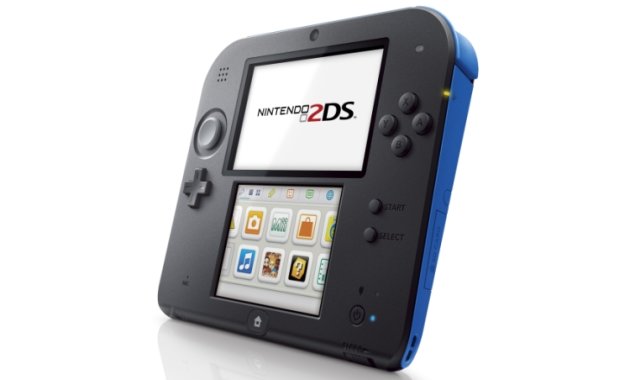Just two years ago, 3D was being touted as the Next Big Thing in gaming
Sony released an affordable 3D monitor for the PlayStation 3 to showcase the system's potential. Nintendo proudly trotted out the 3DS. First-party developers added in the necessary coding to make their games shine on the then-hot technology.
Today, it's an afterthought at best. When Sony (and Microsoft) detailed the laundry list of features for their new consoles, 3D wasn't even mentioned. And while the 3DS is enjoying healthy sales, Nintendo has taken a step back from the technology by introducing the 2DS, a cheaper version of the handheld bereft of the 3D technology entirely.
What happened? Did gaming companies severely misjudge the desires of the public, or were they caught up in a wave that was too big to ignore?
The answer is a little bit of both.
In the post-“Avatar” days, 3D was hot once again. Television manufacturers -- including Sony -- were rolling out new sets that let people enjoy the technology from the comfort of their living rooms. But the sets were expensive, the picture quality in 3D was just so-so, and no one wanted to wear heavy, dorky-looking glasses at home. Gaming in 3D added new challenges, since fast-moving 3D images can give viewers headaches. And since gamers blink less than passive TV watchers, the headaches were worse.
That didn't stop Sony from being big believers, and it made an early convincing case with games like Uncharted 3: Drake's Deception, which looked great in 3D.
"3D gaming is on the verge of completely taking off," said Jack Tretton, president and CEO of Sony Computer Entertainment America at the time. "I think it’s a very similar analogy to HD. … Content will drive adoption."
He had the right idea, but it went the wrong direction. There was never a steady stream of good content, and players quickly lost interest.
Nintendo, meanwhile, thought it had the answer with glasses-free 3D on the 3DS.
“This is the next big step in the modern era of video games,” said Nintendo of America president Reggie Fils-Aime during the system’s launch. “The Nintendo 3DS is 3D games, plus 3D video, plus 3D photography. There are no special glasses or skills required to enjoy it. And above all, the Nintendo 3DS is distinct. It’s a breakthrough. There’s nothing else like it. It is truly a category of one.”
Bold words, but he also misjudged players. Because the 3DS uses fairly new technology, it too can cause headaches and eye fatigue if players aren't looking at the screen from a tight, specific angle. More and more players began to disable the 3D elements on the system, opting instead to play the system’s strong game library in plain old 2D.
Then there's the issue of 3D technology and how it might affect the vision of those under 7. Though the science is still up in the air, Nintendo played it safe by slapping a big warning right on the 3DS game box. Not exactly a vote of confidence, nor is building a version of the handheld that doesn't use the tech whatsoever.
The slow demise of 3D gaming was actually telegraphed pretty early. While first-parties evangelized the technology, third-party publishers openly questioned it from the very beginning.
"Frankly, we have not seen a big uptake for 3D gaming," said John Riccitiello, then-CEO of EA. "We've seen really high returns here, and very poor returns focusing on 3D. So our allocation of resources has been toward the new innovations that are growing more rapidly."
"I think it s a good addition to gaming, but I don't think it's a complete revolution," added Yves Guillemot, CEO of Ubisoft. "We have to learn how to take advantage of depth with 3D so we can have a different way to do things."
Early surveys weren't any more encouraging. More than half of 1,000 gamers surveyed in 2011 said they were not interested in 3D becoming a part of the next generation of consoles.
So is it dead and buried? On the consoles, perhaps, but 3D gaming is finding new support these days over on the PC via the Oculus Rift. While virtual reality and 3D aren't exactly the same, they do share some similarities. In order for the virtual world to seem real, objects need to have depth, and the Rift headset has been blowing people away with its impressive demos.
Like Sony, Oculus also realizes content is critical. Unlike Sony, though, it has a wealth of developers on board, including heavy hitters like Valve Software and Epic Games. While those companies take their time crafting big experiences, a burgeoning homebrew industry is churning out quality conversions and original content. Game design legend John Carmack recently signed on as the company's CTO, lending the Rift even more cred.
And this time, the 3D is much more immersive. Rather than the passive experience of just sitting on your couch and having objects pop off-screen, the Rift tosses you in the middle of the experience (though that has its downside for some people, like this poor fellow.)
Is the Rift the answer 3D gaming proponents have been looking for? It's too early to tell. The track record's not good, but gamers are often up for trying something new. And if it meets their high expectations, that technology can often go on to even bigger things.
For game news, free codes and more, Like us on Facebook and follow @yahoogames on Twitter!



No comments:
Post a Comment